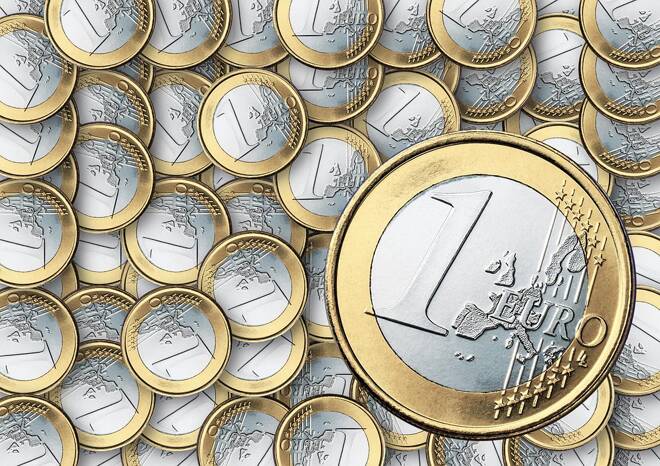Advertisement
Advertisement
Euro Area Annual Inflation up to -0.1%, but Still in Deflation
By:
In their latest flash estimate for inflation in the euro area, Eurostat believe that inflation is minus 0.1% for May, up from the minus 0.2% figure that
In their latest flash estimate for inflation in the euro area, Eurostat believe that inflation is minus 0.1% for May, up from the minus 0.2% figure that was recorded for April.
Services are expected to have the biggest influence on inflation, as the sector’s prices are thought to be 1%, rising from 0.9% in April.
Energy prices slightly recovered month on month, even though for May the inflation rate was minus 8.1%, for April the figure was minus 8.7%.
Food, alcohol and tobacco was stable at 0.8% month on month between April and May, non industrial goods also didn’t move on prices and remained at 0.5%.
Despite the slender rise in inflation, the latest figure is still a long way off from the 2% inflation target set by the European Central Bank (ECB).
The ECB have implemented several measures to boost inflation, in March they decided to increase their quantitative easing programme to 80 billion euros per month.
Additionally, the bank deposit rate was lowered to minus 0.4%, to encourage banks to lend rather than hold onto their capital.
Unemployment in Euro Area Remains Stable
The unemployment rate was 10.2% in April, and remained unchanged from the previous month, according to Eurostat.
Year on year, the figure was more positive, as the rate of unemployment was down from the 11% registered in April last year.
Across the whole of the European Union (EU), unemployment was reduced down to 8.7% from 8.8% that was found in March, compared to April last year, the unemployment rate was down by 0.9%.
Compared with March 2016, the number of those who are unemployed decreased by 106 000 in the EU, and by 63 000 in the euro area.
Over the course of a year, in contrast to April 2015, unemployment fell by 2.096 million in the EU, and by 1.309 million in the euro area.
The figures were the lowest unemployment figures recorded since April 2009 and August 2011, for the EU and euro area respectively.
The Czech Republic celebrated the lowest unemployment rate at just 4.1%, slightly more favourable than Germany, whose unemployment rate is 4.2%.
Europe’s most powerful economy was then followed by Malta, as the island has 4.3% of their labour market currently inactive.
Greece’s economic problems continue, as they have the highest rate of unemployment across the EU, with 24.2% out of work.
Even though their economic growth figures have been improving, Spain posted the next highest rate of unemployment at 20.1%.
Italy also recorded a high unemployment rate of 11.7%, while France, who are in the process of major labour market reforms, have 9.9% without a position.
The UK have relatively a low rate of unemployment, as 4.9% of those eligible to work are without jobs.
In total, the unemployment rate in April 2016 fell in 25 EU Member States, compared to the corresponding month a year ago.
Germany Retail Turnover Increase
Official figures have revealed that the amount of turnover in the retail industry increased by 2.3% in April, compared to the same month a year ago.
Turnover in retail for the first four months of 2016 was 1.9% larger in real terms, and 2% higher in nominal terms, than in the corresponding period of 2015.
About the Author
Peter Tabernerauthor
Did you find this article useful?
Latest news and analysis
Advertisement
